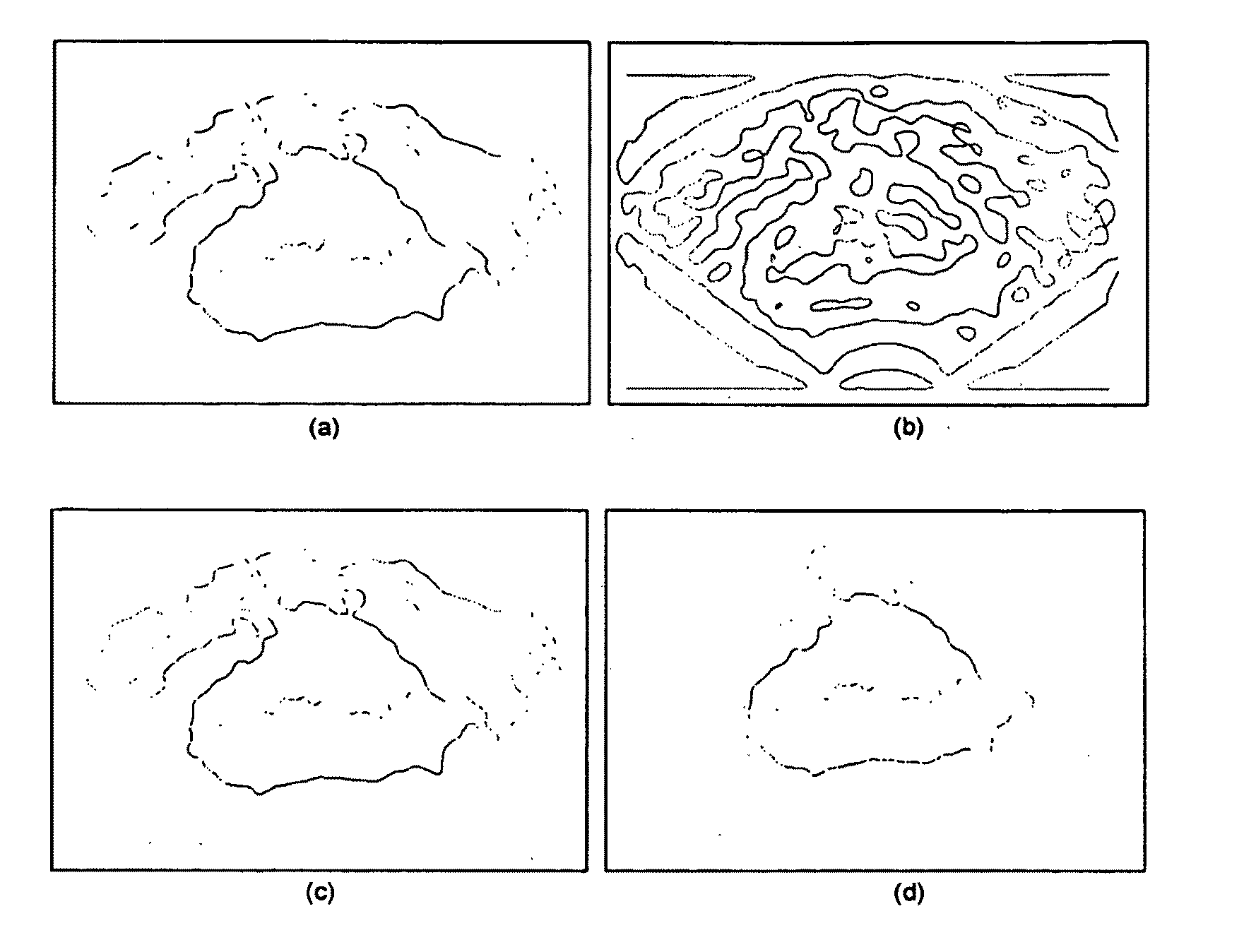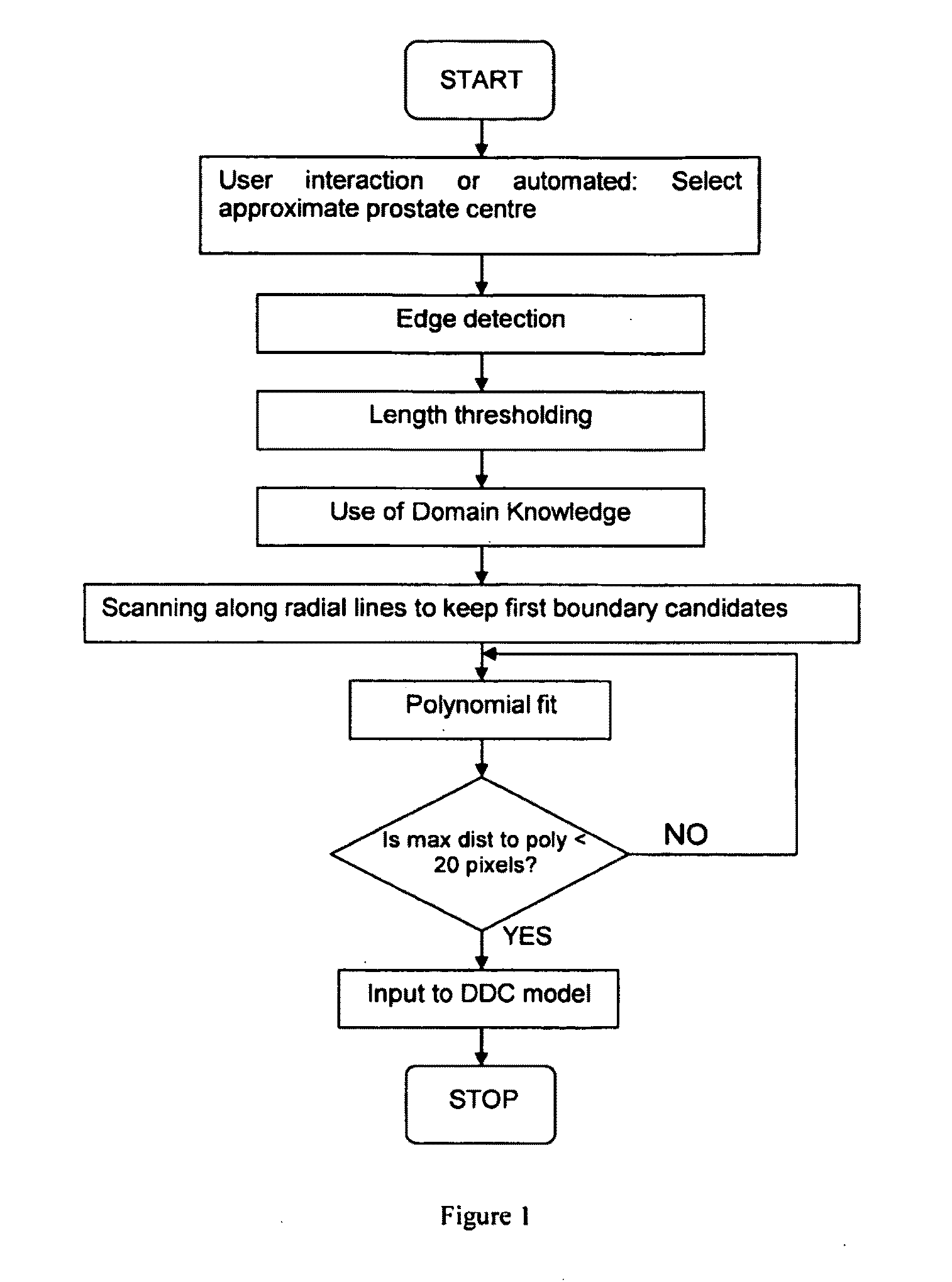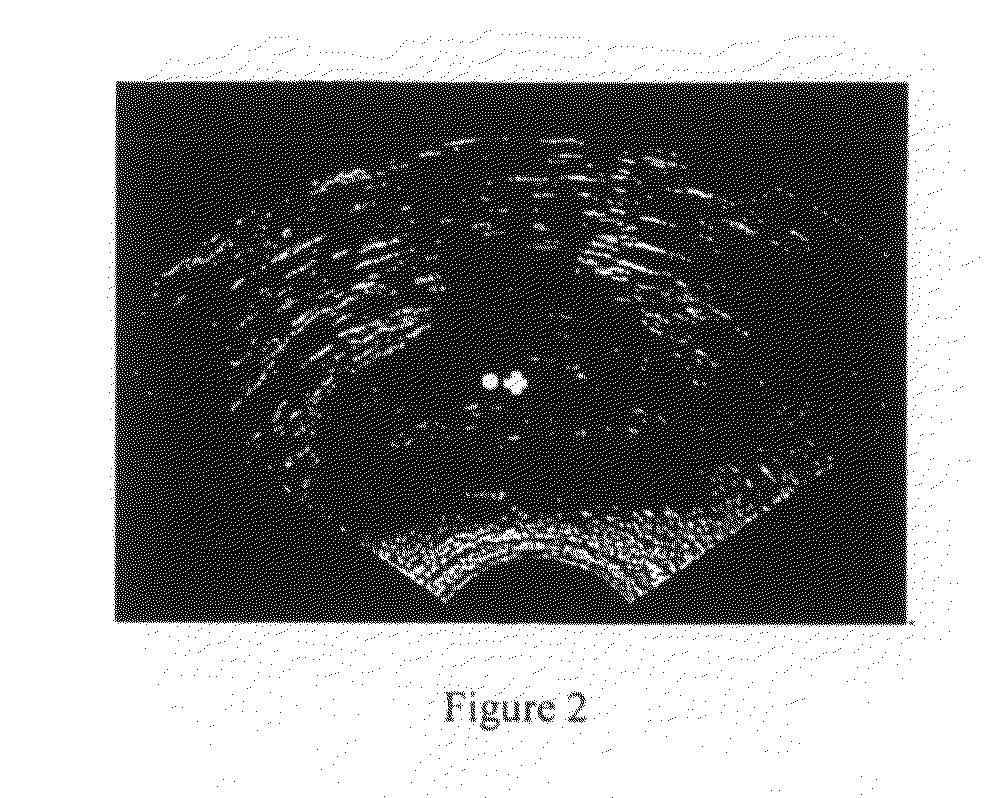Method for automatic boundary segmentation of object in 2d and/or 3D image
a technology of object boundary segmentation and image, applied in the field of medical imaging systems, can solve the problems of pain in ejaculation, difficulty in erectile contraction, and difficulty in starting a urinary tract infection, so as to improve the effectiveness and utility of trus, reduce inter and intra-operator variability, and minimize the effect of tim
- Summary
- Abstract
- Description
- Claims
- Application Information
AI Technical Summary
Benefits of technology
Problems solved by technology
Method used
Image
Examples
Embodiment Construction
[0060]In accordance with one aspect of the present invention, as an input, the algorithm requires the approximate prostate centre. For prostate brachytherapy, the prostate gland is typically centred at the approximate centre of the image. In this case, the user does not need to select the prostate centre; as a result, the algorithm of the present invention would be fully-automatic. In cases when the prostate is not centred at the centre of the image, the user must select the approximate centre; as a result, our algorithm would be semi-automatic. FIG. 2 shows a 2D prostate TRUS image with the location of the user-selected centre shown by a dot and the centre of the image shown as a cross.
[0061]The Gaussian filter is used to blur the image and remove some detail and noise by convolving it with the 2D Gaussian distribution h(x, y):
h(x,y)=12πσ2-x2+y22σ2(1)
where σ is the standard deviation that determines the degree of smoothing. A digital approximation to the Gaussian function with σ=1 ...
PUM
 Login to View More
Login to View More Abstract
Description
Claims
Application Information
 Login to View More
Login to View More - R&D
- Intellectual Property
- Life Sciences
- Materials
- Tech Scout
- Unparalleled Data Quality
- Higher Quality Content
- 60% Fewer Hallucinations
Browse by: Latest US Patents, China's latest patents, Technical Efficacy Thesaurus, Application Domain, Technology Topic, Popular Technical Reports.
© 2025 PatSnap. All rights reserved.Legal|Privacy policy|Modern Slavery Act Transparency Statement|Sitemap|About US| Contact US: help@patsnap.com



